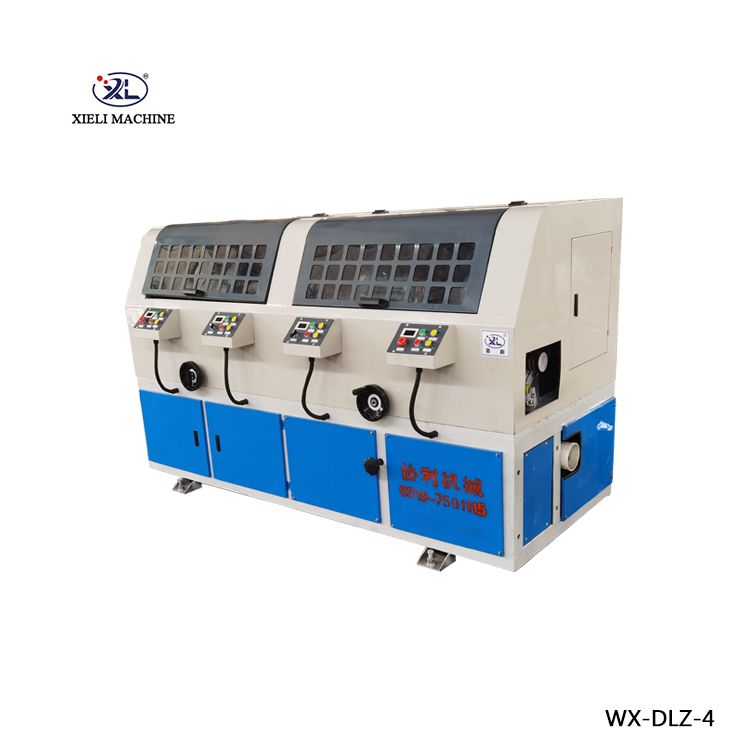Understanding the Throughfeed Centerless Grinder
The manufacturing landscape continually evolves, with advancements in technology impacting how processes are performed. One such innovation is the throughfeed centerless grinder, a vital tool in the metalworking industry that enables high-efficiency and precision in grinding operations. This article delves into the principles, applications, benefits, and considerations associated with throughfeed centerless grinders.
What is a Throughfeed Centerless Grinder?
A throughfeed centerless grinder is a type of grinding machine that allows workpieces to be fed continuously between the grinding wheel and the regulating wheel. Unlike traditional grinding methods, which require the workpiece to be loaded and unloaded manually, throughfeed grinding utilizes the movement of the wheels to efficiently process parts. The workpiece enters the grinding area on one side and exits on the other, hence the term throughfeed.
The design of a throughfeed centerless grinder consists of a grinding wheel, a regulating wheel, and a work rest. The grinding wheel is responsible for removing material from the workpiece, while the regulating wheel controls the speed and feeding rate, ensuring consistent results. This configuration makes throughfeed centerless grinders ideal for producing cylindrical parts with tight tolerances and superior surface finishes.
Applications
Throughfeed centerless grinders are widely utilized in various industries, including automotive, aerospace, medical, and general manufacturing. They are particularly effective for processing long, cylindrical parts such as shafts, pins, and bars. The ability to grind multiple parts simultaneously without interruptions significantly boosts productivity in high-volume production environments.
In the automotive sector, for instance, throughfeed grinders are used for components like hydraulic pistons and fuel injectors. In the medical field, they play a critical role in manufacturing precision instruments and implants. As industries continue to seek optimized manufacturing solutions, throughfeed centerless grinders remain essential for achieving both quality and efficiency.
Benefits
throughfeed centerless grinder

One of the primary advantages of throughfeed centerless grinding is its high productivity. The continuous feed mechanism allows for faster processing times compared to traditional grinding methods. Additionally, the machine's design minimizes manual handling, reducing labor costs and increasing safety.
Precision is another critical benefit. Throughfeed centerless grinders can produce parts with very tight tolerances, which is crucial in industries where even the slightest dimension deviation can lead to failures in functionality. The consistent pressure and speed provided by the regulating wheel help maintain uniformity across all processed items.
Moreover, these grinders are known for their ability to achieve exceptional surface finishes. The combination of the grinding wheel's abrasive material and optimized operational speed enables parts to have smooth surfaces, reducing the need for extensive post-processing.
Considerations
While throughfeed centerless grinders offer numerous advantages, there are several factors to consider when implementing them into a production line. Setup and adjustment can be complex, requiring skilled operators to ensure that the machines are calibrated correctly for different workpiece sizes and materials. Compatibility with the specific requirements of manufacturing processes is also essential, as not all parts are suited for throughfeed grinding.
Maintenance is another key aspect, as regular checks are necessary to keep the grinding wheels and regulating wheels in optimal condition. Wear and tear can impact precision and productivity, highlighting the need for a robust maintenance schedule.
Conclusion
In summary, the throughfeed centerless grinder is a crucial asset in modern manufacturing. Its ability to deliver high precision, efficiency, and excellent surface finishes makes it indispensable across various industries. As companies continue to embrace automation and seek ways to optimize production processes, throughfeed centerless grinders will undoubtedly play an essential role in achieving these goals. Understanding their operation, benefits, and operational considerations can empower businesses to harness the full potential of this advanced grinding technology.
-
Precision Centerless OD Grinder with Surface Attachment China OEMNewsJun.06,2025
-
Cincinnati Milacron Centerless Grinder High-Precision & DurableNewsJun.06,2025
-
Premium China OEM Internal Centerless Grinding Machine Discount PricingNewsJun.06,2025
-
Discounted Viking Centerless Grinder Sale OEM & China PrecisionNewsJun.06,2025
-
Precision Cincinnati Centerless Grinder - OEM, China, Discount OptionsNewsJun.06,2025
-
Paragon Centerless Grinder High Precision & Discount ModelsNewsJun.05,2025


